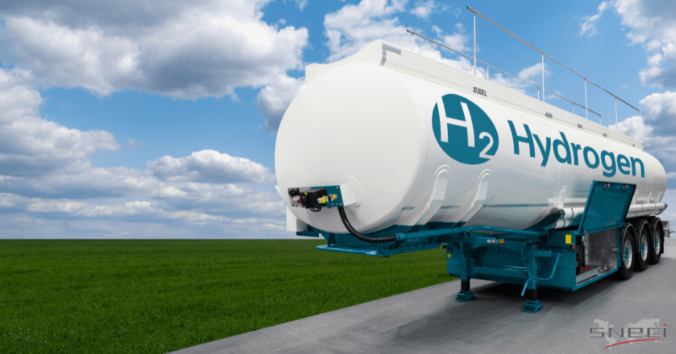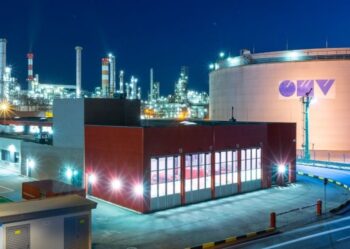The different axes of the hydrogen deployment plan

France has set various objectives to reduce its carbon footprint in the coming years, hoping to have a rate of 32% of renewable energy in final energy consumption by 2030.
By 2040, the country aims to have a rate of 40% of renewable energy for electricity production.
This will also allow the country to continue its efforts to achieve carbon neutrality by 2050.
Hydrogen is a resource that can potentially help France make its ambitions a reality. Indeed, the country now has a deployment plan for hydrogen focused on 3 major points: industry, mobility and energy.
Before going into the details of the plan, let’s briefly recall what hydrogen is. Composed of two hydrogen atoms (H₂), it is the most abundant chemical element on earth. This invisible gas is also the lightest and is only rarely found in its natural state. It is therefore considered an energy carrier and not a direct energy source because its use requires a precise chemical process beforehand (production, storage, isolation of the element…).
Axis number 1: Initiate the electrolysis sector for the production of hydrogen for industrial use
Today, around 900,000 tons of hydrogen are produced and consumed each year in France. Hydrogen is mainly produced from fossil fuels and represents about 3% of total greenhouse gas (GHG) emissions worldwide.
Its current production is polluting because it contributes to the emission of greenhouse gases, the main factor leading to global warming.
However, there is a way to produce hydrogen in an environmentally responsible way while considerably reducing its carbon footprint: the electrolysis technique.
This process transforms electrical energy into molecular decomposition energy, via an oxidation-reduction reaction (a chemical reaction during which electrons are transferred).
In other words, electrolysis breaks down water into oxygen and hydrogen using an electric current.
In terms of environmental impact, the interest of electrolysis depends largely on the original electricity mix. The latter will be more or less high depending on the energy source used (renewable energy, nuclear energy…).
There are several electrolysis techniques today:
– Alkaline electrolysis: this is the most widespread technique for the production of electrolytic hydrogen. It is a method of hydrogen production that consists of separating oxygen and hydrogen from water by an electric current in an alkaline (liquid) solution. It mainly uses a potassium hydroxide (KOH) solution. Alkaline electrolysis can however encounter problems when coupled with intermittent energy.
– PEM (Proton Exchange Membrane) electrolysis: This method uses a polymer membrane (PEM) as a solid electrolyte. The operating principle of a PEM electrolyzer is based on the same concept as a fuel cell. The solid electrolyte ensures the conduction of atoms and allows the separation of gases to obtain hydrogen. The PEM electrolysis allows a decentralized production, thanks to a better reactivity to power variations.
– High temperature electrolysis: this process is based on the decomposition of water molecules at high temperature. Part of the energy needed for the reaction is provided by the heat generated by the water vapor, which makes it possible to do without expensive catalysts (platinum, iridium, etc.). Thus, this method has an advantage in terms of costs because it reduces those related to the investment and operation of these types of catalysts.
However, it should be noted that all three methods require specific technologies and generate high costs. The purchase, installation and use of the electrolysers entail considerable expenses.
In addition, there are technology and manpower constraints. Moreover, electrolysis requires the mass production of gigantic electrolysers, which are themselves large consumers of metals or toxic products, which are harmful to the planet.
It is therefore necessary to make this process viable: the cost of the original (renewable) electricity should not exceed the price of the gas used in the process. However, this is not easy today, which dissuades the players concerned from starting the production of hydrogen by electrolysis.
This is why the French government will put in place various measures to encourage greater use of this method.
For example, support for the acquisition of electrolysers is envisaged: this will involve investment aid to encourage manufacturers to take action.
Axis number 2: Valorize hydrogen in mobility uses in a complementary way to batteries.
The second axis of the hydrogen plan is based on mobility. The overall aim is to use hydrogen to move towards a more environmentally friendly mobility.
Indeed, hydrogen has several applications in mobility.
– Hydrogen for the fuel cell : it can be used in the automotive sector, and more precisely in vehicles with a fuel cell. This is an alternative way to operate in a more ecological way. In concrete terms, hydrogen vehicles draw their energy from a fuel cell powered by this gas. This hydrogen is stored in a tank (located in the vehicle) and then fed into the fuel cell, which will provide electricity to drive the vehicle, without generating toxic exhaust emissions. The only by-product of the entire process is water and heat, both of which are natural resources. The only emission generated would be H2O (commonly known as water). A hydrogen vehicle can travel up to 600 km with a full tank at a service station, compared to a maximum of 400 to 500 km for an electric vehicle. The only drawback: obtaining hydrogen. As it is not available in its pure state, it is absolutely necessary to review the way of producing hydrogen and, to be totally environmentally friendly, to produce it from renewable energies (such as biomass), which is what we call green hydrogen.
– Hydrogen for heavy vehicles : studies estimate that in 2050, 25 to 65% of heavy vehicles will be able to run on hydrogen in France. Indeed, local and inter-regional trips would be carried out by battery electric models. There is therefore a real potential for the development of hydrogen for heavy vehicles. This is the reason why some manufacturers and start-ups specialized in green mobility have joined forces to work together on this subject. The objective is to develop fuel cell trucks for long-distance transport and to deploy hydrogen stations along the main roads.
– Hydrogen for other sectors (maritime, rail, aeronautics…) : These different sectors are often penalized because of batteries that remain expensive and cumbersome. Hydrogen would therefore be an alternative for these modes of transport. It is very light and can be recharged quickly.
Thus, as part of its hydrogen plan, the French government has set various objectives such as
- Introduction of 5,000 light commercial vehicles and 200 heavy vehicles (buses, trucks, TER, boats) and the construction of 100 stations, powered by hydrogen, which would be produced locally by 2023.
- Introduction of 10% decarbonated hydrogen in industrial hydrogen by 2023
SNECI and other actors such as ADEM will have the mission to accompany actors wishing to progress in this field.
Thanks to our 450 experts around the world, we have been supporting manufacturers for 70 years now towards a low-carbon industry thanks to our global and local vision for a better appreciation of the challenges specific to each country and sector.
The objective is to support project leaders, particularly at the institutional, regulatory and/or financial level, and to help manufacturers, suppliers and local authorities to include hydrogen in their deployment plans through a convergence plan that we are setting up jointly with our customers.
Axis 3: Hydrogen as an element of stabilization of energy networks in the medium-long term
Hydrogen produced by electrolysis technology is a good way to integrate renewable energies into the electrical system. Hydrogen is also an alternative for massive storage. The “powerto-gas”, which consists of the direct injection of hydrogen into the gas networks, is one of the promising methods.
Hydrogen could also be applied as an energy carrier in non-interconnected areas. This resource would act as a flexibility vector for the electrical system.
The injection of decarbonated hydrogen into gas networks can also have a positive impact in reducing CO2 emissions.
Electrolyzers are also capable of providing services to electrical networks from renewable energy sources.
The French government has therefore planned to help actors wishing to carry out territorial projects related to green mobility. This includes, for example, financial support for charging stations and the acquisition of professional vehicles.
In addition, collaborative work will be undertaken with professionals in each field (architects, inspectors of classified facilities, urban planners, etc.) to support actors towards ecological mobility (with hydrogen).
Finally, an ecological transition of the railway fleet is also planned in order to replace the most polluting locomotives as soon as possible and thus reach carbon neutrality in 2050.
To conclude, the hydrogen deployment plan must allow the development of the French hydrogen sector thanks to all the actors and technologies of our industry to allow the start-up by starting with the sectors closest to profitability, allowing a perennial development.
The French plan must also be part of a global competition that has already been launched. It is indeed essential to build this new energy sector with a global vision, especially since the industrial sectors, which are themselves global, will be primarily concerned.
Thus, beyond the export potential of the French sector, cooperation will be possible, particularly with Germany on industrial issues (in connection with German chemistry) and on mobility (with the support of French equipment manufacturers, whose main markets are in both countries) for the production of green hydrogen.
SNECI and the support of manufacturers and suppliers in the production of green hydrogen
We support our customers in the deployment of green hydrogen installations by electrolysis, improving their processes and profitability while taking into account local regulatory constraints.
Our 10 subsidiaries enable us to support any industrialist or supplier worldwide, whether in Africa, Asia, Europe or America.
Our support in improving industrial performance is based on several axes:
- Industrial diagnosis & Management of industrial projects
- Definition of the action plan
- Assistance in the implementation of the action plan – audits
- Consolidation through training and coaching of teams
- Outsourcing of your support functions, purchasing and logistics
Our 450 experts in more than 50 countries are specialized in engineering and project management with a technical DNA and a local approach to guarantee the results expected by our customers.
If you would like SNECI’s engineers and experts to support you, contact us.






